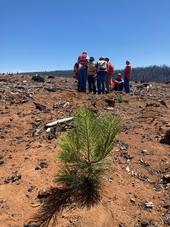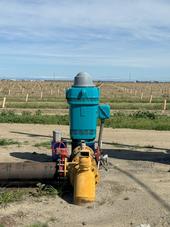- Author: Michael Hsu

Quickly planting trees after wildfires crucial for communities, ecosystems, carbon goals
As the climate crisis fuels more high-severity wildfires, many forests – adapted to bounce back from frequent but less-intense fires – are struggling to recover quickly.
“In a lot of locations, forests in the Sierra Nevada that burn at high severity are not regenerating on their own,” said Susie Kocher, University of California Cooperative Extension forestry and natural resources advisor for the Central Sierra. “They need to have...
- Author: Nina Erlich-Williams, Public Good PR for LA Waterkeeper

Wastewater recycling in Los Angeles is the focus of a new report released by the UCLA Luskin Center for Innovation and the UC Agriculture and Natural Resources. The report, Making the Most of Landmark Recycled Water Investments in Los Angeles: Technical Advisory Recommendations for the Region, was commissioned by Los Angeles Waterkeeper. The goal of the report is to support ongoing efforts to improve local water security and rely less on expensive, energy-intensive and increasingly unreliable water imports from faraway places, like the...
- Author: Pamela S Kan-Rice

Additional guidance needed for groundwater management strategies
Cover crops are planted to protect and improve the soil between annual crops such as tomatoes or between rows of tree and vine crops, but growers may be concerned about the water use of these plants that don't generate income.
“Cover crops are one of the most popular practices we see farmers employ through our Healthy Soils Program,” said Karen Ross, secretary of the California Department of Food and Agriculture. “Cover crops supply a host of benefits, such as helping to protect against soil erosion, improving soil...
- Author: Pamela S Kan-Rice

Groundwater demand management in agricultural regions is the focus of a workshop that will be held June 17, from 9 a.m. to 3:30 p.m., at the Hyatt Regency San Francisco Airport in Burlingame.
Representatives of groundwater sustainability agencies (GSAs), water districts, irrigation districts, government agencies, environmental justice organizations and the private sector and growers and researchers will discuss groundwater demand management from their own perspectives.
“Speakers will discuss policy development, stakeholder engagement and funding considerations for groundwater demand...
- Author: Saoimanu Sope

UCCE specialist's research prevents water pollution, reduces water use
When interviewed to become a University of California Cooperative Extension specialist in environmental horticulture, Lorence “Loren” Oki was asked what kind of research he wanted to conduct.
In response, he showed the hiring committee a photo of a residential gutter. “Water is a big concern, and I found very little research on runoff from homes,” said Oki, explaining that studying residential runoff is what “started his career”...



